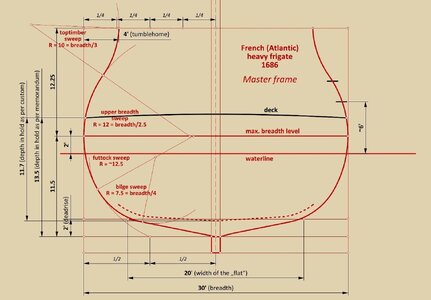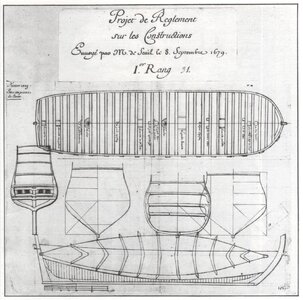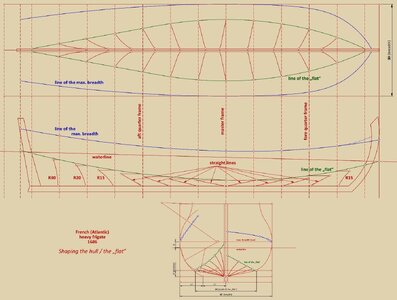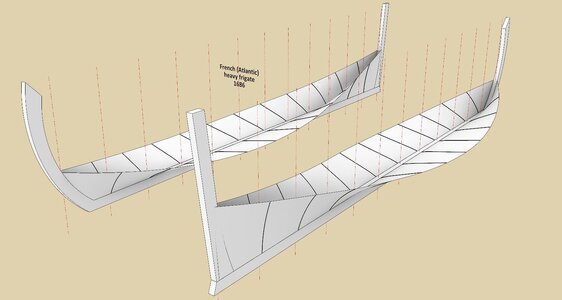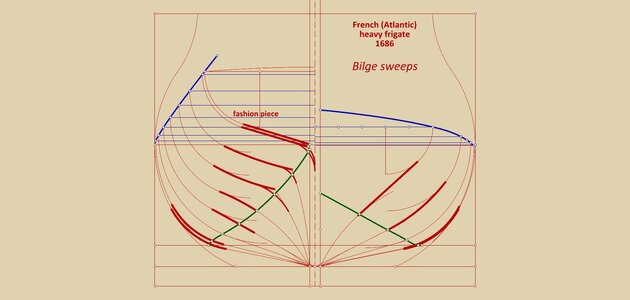.
2. Futtock sweeps
It could be said that the way of defining futtock sweeps in this French frigate is in some ways quite similar to the way employed in the Dutch 72-gun ship, described in the thread
The Dutch 72-gun ship ca. 1690 – the apogee of Dutch ship design of the Classical Age | Ships of Scale, and both of these design variants are particularly well suited to shaping the hulls of ships sporting very sharp forms.
In this case, the procedure is somewhat less obvious, but also essentially quite simple:
– for the three central leading frames (master frame and both adjacent frames #1), the futtock sweep radius is the same, as previously defined for the master frame,
– for both frames #2, fore and aft, the radii are chosen so that these arcs are tangent to the „flat” line,
– for the frame #4 (the first leading frame from the fore), the radius is equal to 2/5 of the half-breadth of that frame,
– for the fashion piece the radius is equal to ¼ the length of the wing transom,
– finally, to obtain the radii of the futtock sweeps for all the other leading frames, auxiliary lines (black colour) have been applied, obtained by appropriately connecting with a straight line the lower quadrant points in two pairs of frames with futtock sweeps already determined (see diagram below). All arcs obtained are tangent to the level found by the intersection of both auxiliary lines with the corresponding vertical station lines.

Exactly the same would have the following appearance in the form of a classic body plan:
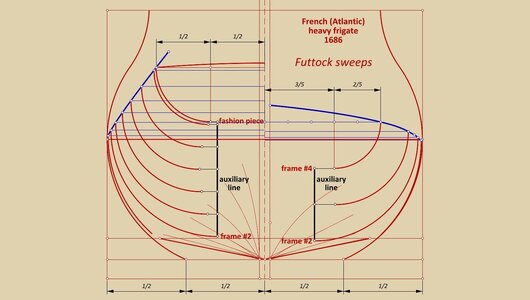
.








